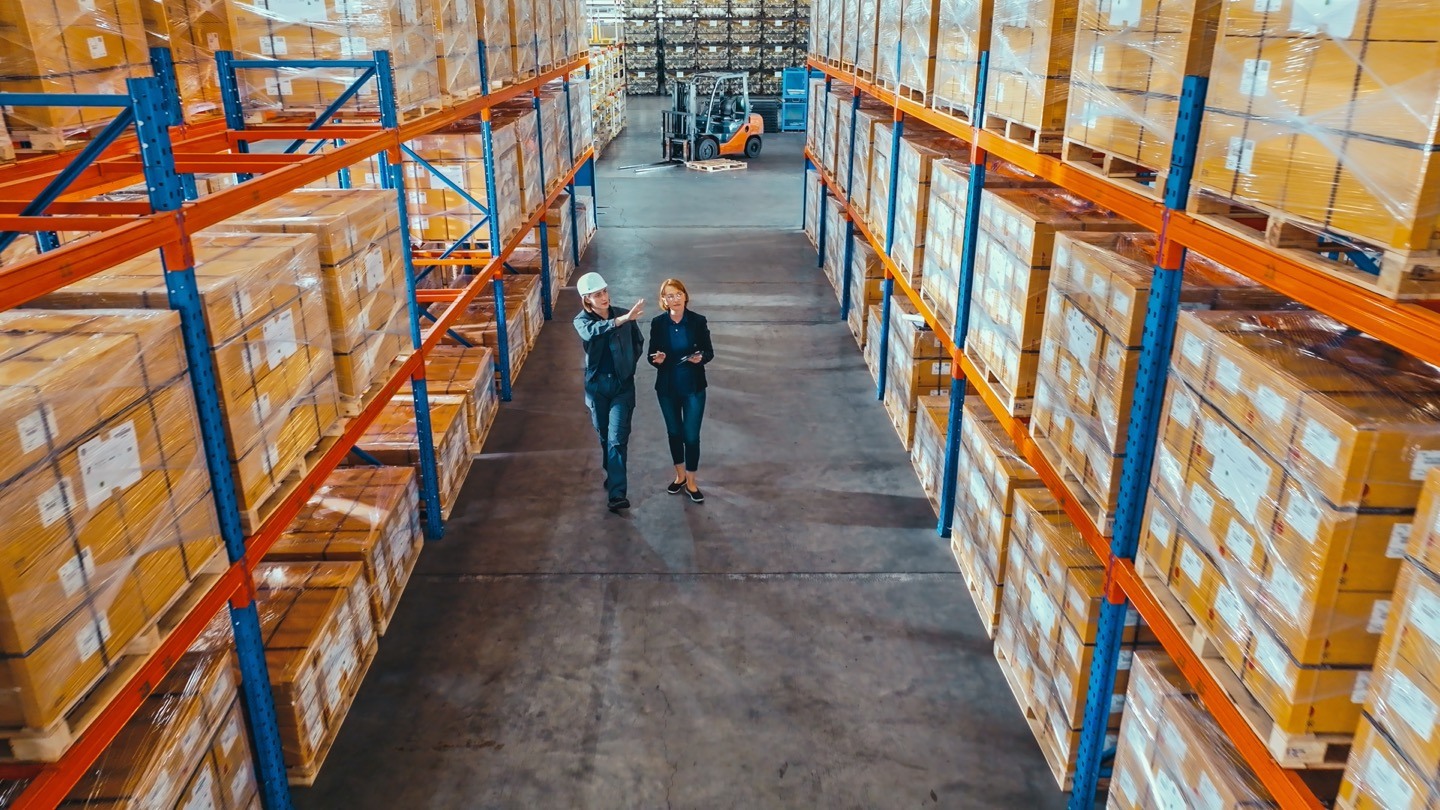What is scarcity and how can it impact your supply chain?
What is scarcity? Learn to manage its impact on your supply chain with strategies like diversifying suppliers, building inventory, and using ERP systems.

Imagine you’re ready to launch a highly anticipated product, but you can’t get the materials you need to continue producing enough of the product to meet the anticipated demand.
Suddenly, the excitement turns into frustration as your supply chain grinds to a halt. This is the reality of scarcity, a challenge that can disrupt even the best-laid business plans.
But what is scarcity?
Understanding scarcity and its impact on your supply chain is crucial to navigating today’s volatile business environment.
Keep reading to learn what scarcity is, why it’s important, and how you can manage it effectively within your supply chain.
By the end of this article, you’ll have a comprehensive understanding of scarcity, armed with actionable strategies to mitigate its risks.
Here’s what we’ll cover
- What is scarcity?
- The scarcity principle
- Why is scarcity important in business?
- Types of scarcity
- Causes of scarcity
- How scarcity impacts a business
- How scarcity impacts supply chains
- How ERP software can help manage scarcity
- What can you do to mitigate scarcity’s impact on your business?
- Final thoughts on scarcity
What is scarcity?
In simple terms, scarcity means there isn’t enough of something to satisfy everyone who wants it.
This can affect business in different ways, such as through its supply chain, or through its talent pool.
In the context of supply chains, scarcity occurs when the demand for a product or resource exceeds its supply.
This can be due to various factors, including natural resource limitations, production capacity constraints, or unexpected disruptions like natural disasters or pandemics.
Your supply chain consists of all the materials (and suppliers providing them) required to transform raw materials into finished goods.
For example, an electronics supply chain involves sourcing raw materials like silicon, copper, and rare earth metals, which are supplied to manufacturers of electronic components such as microchips, circuit boards, and batteries.
These components are then assembled into products like smartphones, laptops, and televisions, which are distributed through retail channels to end-users.
When one part of the chain is delayed or broken, it affects all the other parts in a domino effect.
Scarcity forces businesses to make tough decisions about resource allocation, pricing, and production, impacting every aspect of operations.
The scarcity principle
The scarcity principle is a psychological phenomenon where people place higher value on things that are scarce or hard to obtain.
This principle drives consumer behavior and can influence how businesses market their products and manage their supply chains.
For example, during the pandemic, the scarcity of essential items like hand sanitizers and toilet paper, thanks to both an underestimation of demand and a break down in their supply chains, led to panic buying and hoarding.
Retailers saw these items fly off the shelves as consumers, driven by the fear of missing out, bought more than they needed.
This behavior, rooted in the scarcity principle, highlights how perceived scarcity can create real demand spikes and supply chain challenges.
Why is scarcity important in business?
Scarcity plays a crucial role in business because it directly affects pricing, demand, and competition.
When resources are scarce, their value increases, leading to higher prices.
This can be beneficial for businesses that manage to secure scarce resources because they can charge a premium.
However, it can also lead to significant challenges, such as increased costs, supply chain disruptions, and customer dissatisfaction.
Understanding scarcity is essential for making informed business decisions.
For instance, if a company anticipates a shortage of raw materials, it might decide to increase its inventory levels or seek alternative suppliers.
Scarcity also drives innovation, pushing businesses to find new ways to meet customer needs despite limited resources.
Types of scarcity
Scarcity comes in different forms, each with unique implications for businesses and supply chains.
Understanding the types of scarcity can help you identify potential risks and develop strategies to mitigate them.
Absolute scarcity vs. relative scarcity
Absolute scarcity occurs when a resource is physically limited and cannot be replaced.
For example, natural resources like fossil fuels and rare earth metals are subject to absolute scarcity.
Once depleted, these resources cannot be replenished, leading to long-term challenges for industries that rely on them.
An example of absolute scarcity is the depletion of helium, a non-renewable resource critical for medical imaging, scientific research, and even party balloons.
As helium reserves dwindle, industries dependent on this gas face significant challenges, driving up costs and necessitating the search for alternatives.
Relative scarcity, on the other hand, is temporary and often caused by disruptions in supply chains, production delays, or sudden spikes in demand.
For example, a shortage of semiconductor chips in 2021 led to delays in manufacturing everything from cars to consumer electronics.
While the supply of semiconductors was not absolutely scarce, the sudden increase in demand coupled with production bottlenecks created relative scarcity.
A recent example of relative scarcity is the shortage of personal protective equipment (PPE) during the early stages of the pandemic.
While materials to produce PPE were available, the sudden surge in global demand overwhelmed supply chains, leading to critical shortages.
This relative scarcity had significant impacts on healthcare systems worldwide.
Causes of scarcity
Scarcity can be caused by a variety of factors, ranging from natural events to human-induced challenges.
Understanding these causes can help businesses anticipate and respond to scarcity before it disrupts operations.
Natural causes
Natural disasters, such as earthquakes, hurricanes, and floods, can cause sudden and severe scarcity by disrupting production facilities, transportation networks, and supply chains.
For example, the 2011 earthquake and tsunami in Japan caused widespread shortages of automotive parts, leading to significant disruptions in the global automotive industry.
Climate change is another natural cause of scarcity, as it affects the availability of resources like water and agricultural products.
Prolonged droughts, for instance, can lead to water scarcity, impacting everything from food production to manufacturing and logistics processes.
Human-induced causes
Human activities, such as overconsumption, economic policies, and mismanagement of resources, can also lead to scarcity.
Overfishing, for instance, has led to the depletion of fish stocks in many parts of the world, creating scarcity for the fishing industry and those dependent on it.
Economic policies, such as tariffs and trade restrictions, can also cause scarcity by limiting the availability of certain goods.
For example, trade tensions between the US and China have led to shortages of certain products and raw materials, disrupting supply chains and increasing costs for businesses.
How scarcity impacts a business
Scarcity can have far-reaching impacts on businesses, affecting everything from operational efficiency to customer satisfaction.
The most immediate impact is often felt in the form of production delays. When key materials or components are scarce, production lines can come to a halt, leading to missed deadlines and increased costs.
For example, the global chip shortage that began in 2020 has had a profound impact on the automotive industry.
Major car manufacturers, including Ford and General Motors, were forced to temporarily shut down production lines due to a lack of semiconductors.
This scarcity not only delayed vehicle deliveries but also led to higher prices and reduced availability of new cars.
Scarcity can also drive up costs, because businesses may need to pay a premium to secure scarce resources.
This can squeeze profit margins, especially if businesses are unable to pass these costs on to customers.
Additionally, scarcity can damage a company’s reputation if it leads to stock outs or delays in fulfilling customer orders.
How scarcity impacts supply chains
Scarcity can wreak havoc on supply chains, leading to bottlenecks, delays, and increased vulnerability to external shocks.
When a critical component or raw material becomes scarce, the entire supply chain can be disrupted, causing delays that ripple through to the end customer.
Global supply chains are particularly vulnerable to scarcity.
For example, the pandemic exposed the fragility of global supply chains. Lockdowns and restrictions led to shortages of everything from medical supplies to consumer electronics.
Businesses that relied on just-in-time inventory systems found themselves unable to meet demand, highlighting the risks of lean supply chains in the face of scarcity.
Scarcity also increases the risk of supply chain disruptions due to geopolitical tensions.
For instance, the reliance on rare earth metals sourced primarily from China has raised concerns about the vulnerability of supply chains to political instability or trade disputes.
How ERP software can help manage scarcity
Enterprise Resource Planning (ERP) software can be a powerful tool for managing scarcity in supply chains.
ERP systems provide real-time visibility of inventory levels, production processes, and supplier performance, allowing businesses to anticipate and respond to scarcity before it becomes a crisis.
For example, ERP software can help businesses identify alternative suppliers when a primary supplier is unable to meet demand due to scarcity. This flexibility can be crucial in maintaining production schedules and avoiding costly delays.
ERP systems can also improve demand forecasting, helping businesses to better anticipate periods of scarcity and adjust their inventory levels accordingly.
By analyzing historical data and market trends, ERP software can provide insights into when and where scarcity is likely to occur, allowing businesses to take proactive measures.
Let’s say a small specialty food manufacturer faces a shortage of organic almonds, a key ingredient in its top-selling products, due to an unexpected poor harvest.
Using their ERP system, the company quickly identifies low inventory levels and triggers alerts, allowing them to act swiftly.
The ERP helps them assess alternative suppliers, forecast demand, and adjust production schedules to prioritize high-margin products.
By simulating different scenarios, the ERP supports informed decision-making, enabling the company to maintain production, communicate effectively with customers, and manage costs despite the scarcity.
This proactive approach ensures they continue to meet customer demand while protecting their brand reputation.
What can you do to mitigate scarcity’s impact on your business?
Scarcity can be particularly challenging for Small and Medium-sized Enterprises (SMEs), where resources are often limited, and supply chain disruptions can have a significant impact.
However, with the right strategies, you can mitigate scarcity’s effects and keep your business running smoothly.
Here are some practical steps you can take:
Diversify your supply base
For SMEs, relying on a single supplier can be risky. If that supplier faces a shortage or disruption, it can halt your entire production process.
To reduce this risk, diversify your supply base by working with multiple suppliers, even if they’re smaller or more localized.
This strategy spreads the risk and ensures that if one supplier experiences shortages, others may still be able to meet your needs.
For example, a small bakery that sources flour from a single supplier might face issues if that supplier experiences a shortage.
By establishing relationships with additional local mills or even other bakeries willing to sell excess stock, the bakery can ensure a steady supply of flour even during disruptions.
Build buffer inventory
Maintaining a buffer stock of critical materials or products can be a lifeline during times of scarcity.
For SMEs, this might mean keeping a small reserve of essential items that are difficult to source or have long lead times.
While holding extra inventory can tie up capital, it provides a safety net that can keep your business operational during supply disruptions.
In the case of a local restaurant that relies on fresh produce, they might face challenges during seasonal shortages.
By preserving certain ingredients or stocking up on non-perishable items like grains and spices, the restaurant can continue serving its full menu even when some fresh items are scarce.
Strengthen supplier relationships
Building strong relationships with your suppliers can be especially valuable for SMEs, where smaller order volumes might not always make you a priority.
By fostering close partnerships, you can learn more about potential supply chain issues and negotiate favorable terms, such as priority access to scarce resources or more flexible delivery schedules.
A small clothing boutique that works closely with a few independent fabric suppliers can benefit from these strong relationships.
During a fabric shortage, the suppliers might prioritize the boutique over larger competitors because of the established trust and consistent business.
Invest in technology and data analytics
Even for SMEs, technology like inventory management software can provide crucial insights into your supply chain, helping you anticipate and respond to scarcity.
Affordable solutions can track inventory levels, forecast demand, and identify potential shortages before they become a problem, allowing you to make informed decisions.
Let’s say a small craft brewery uses inventory management software to monitor its stock of hops and other ingredients.
By analyzing trends and past consumption data, the brewery can anticipate when certain hops might be in short supply and order them in advance, preventing production delays.
Explore alternative materials or processes
When facing scarcity, SMEs can benefit from being innovative.
Consider using alternative materials or modifying your production processes to work around shortages.
Flexibility in your approach can help you continue operations even when preferred materials are scarce.
A small furniture maker facing a hardwood shortage might switch to using reclaimed wood or explore alternative materials like bamboo.
Not only does this keep production going, but it can also appeal to environmentally conscious customers.
Monitor and adjust pricing strategies
Scarcity often leads to increased costs for materials, which can be particularly challenging for SMEs with tight margins.
To mitigate this, monitor your pricing strategies and adjust them as necessary.
You might consider raising prices to cover higher costs or offering limited-time promotions to encourage customers to purchase before scarcity worsens.
For example, a local café facing a spike in coffee bean prices might raise the prices of specialty drinks slightly while offering a discount on less-affected items like tea or baked goods.
This helps manage costs while maintaining customer satisfaction.
Develop a contingency plan
For SMEs, a well-thought-out contingency plan can make a big difference when dealing with scarcity.
This plan should outline what steps your business will take if a key supplier can’t deliver or if you face unexpected shortages.
Regularly revisiting and updating this plan ensures you’re prepared to adapt quickly.
A small tech startup might develop a contingency plan that includes backup suppliers for key components and strategies for scaling back production if necessary.
By having this plan in place, the startup can pivot quickly if a supply chain disruption occurs, minimizing downtime.
Final thoughts on scarcity
Scarcity is an inevitable challenge in the business world, but it doesn’t have to derail your operations.
By understanding the different types of scarcity, their causes, and their impacts, you can take proactive steps to mitigate risks and protect your supply chain.
Enterprise Resource Planning (ERP) software offers a powerful solution for managing scarcity, providing the real-time data and insights needed to navigate disruptions and maintain operational efficiency.
Whether you’re dealing with absolute scarcity or a temporary shortage, having the right tools and strategies in place can make all the difference.
By strengthening supplier relationships, exploring alternative materials, and having a solid contingency plan, you can turn scarcity from a threat into an opportunity for resilience, innovation, and growth.






Ask the author a question or share your advice